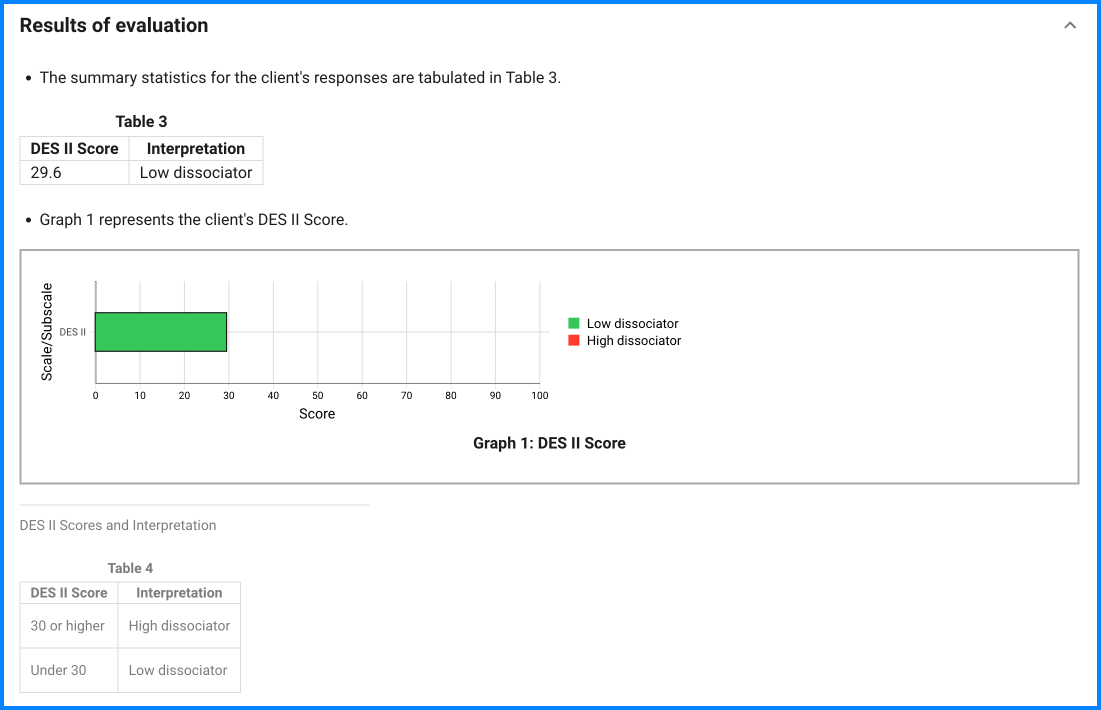Since the questionnaire relies on client self-report, all responses should be verified by the clinician, and a definitive diagnosis is made on clinical grounds taking into account how well the client understood the questionnaire, as well as other relevant information from the client.
Though the scale has been used to measure dissociation in non-clinical (normal) populations, this was not its intended purpose and users should be aware of this. Since non-clinical subjects typically score in a fairly narrow range at the low end of the scale on the DES, small differences among these subjects may not be meaningful.
Similarly, since the DES was developed for use with adults (persons 18 or older), the language used and the experiences described are appropriate for adults, but may not be appropriate for younger persons.
The DES was not intended as a diagnostic instrument. High DES scores should not be construed as an indicator of a dissociative disorder diagnosis.
Many clinicians have used the DES as a screening device to identify high dissociators, but are unsure how to proceed when someone obtains a high score on the scale. Most times that a client scores over 20 or 30 on the DES, the clinician will want to know more about the dissociative experiences that contributed to the high score. One approach at further investigation would be to use the completed scale to interview the client. For each item with a score of 20 or more, the clinician could ask the client for an example of the dissociative experience (e.g., Can you give me an example of a time when you found something among your possessions that you didn't remember buying?"). With this method, it is possible to find out if a client has understood a question differently than it was intended. For example, a client might answer the above question with, "Sometimes my wife buys me new shirts and I find them in my closet." Clearly, this experience is not an example of dissociation and the high score is misleading.
Another approach would be to use one of two available structured clinical interviews for dissociative disorders. The Dissociative Disorders Interview Schedule developed by Ross (Ross et al., 1989) and the Structured Clinical Interview for DSM-III-R Dissociative Disorders developed by Steinberg (Steinberg et al., 1990) can both be used to make or rule out a dissociative disorder diagnosis.



